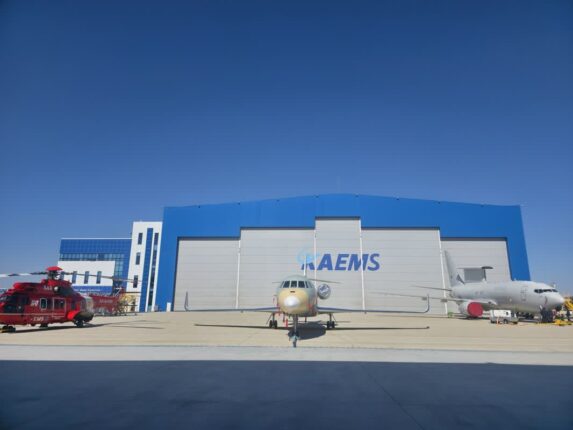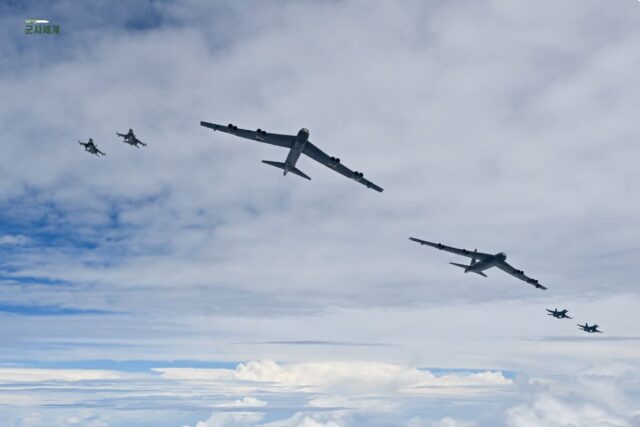
The South Korean Navy has successfully completed a combat test involving the launch of a fixed-wing drone from a naval vessel. Expanding the role of drones at sea is expected to give new momentum to the Navy’s efforts to establish an integrated manned-unmanned maritime combat system.
On Tuesday, the Navy conducted a combat test launching a fixed-wing drone from the 14,500-ton Dokdo amphibious assault ship’s flight deck. The drone involved in the test was the Mojave prototype developed by the American company General Atomics, with a takeoff distance of 70 to 90 meters. Measuring 16 meters in wingspan, 9 meters in length, and 3 meters in height, the Mojave accelerated along the Dokdo’s 199-meter flight deck before lifting into the sky. After takeoff, it flew over the East Sea.
While the Navy has previously operated rotary-wing UAVs like the S-100 unmanned helicopter from ships, this marks the first time a larger fixed-wing drone has been launched from a vessel with a flight deck. Fixed-wing drones are considered superior to their rotary-wing counterparts in terms of speed and operational range, offering enhanced tactical capabilities.
The Navy explained that it conducted this combat test to ensure a robust military readiness amid tense security conditions and to explore methods for the early acquisition and operation of unmanned aerial assets.
In particular, by conducting the test on the flight deck of a vessel in motion, the Navy aimed to assess the feasibility of operating fixed-wing drones at sea and plans to use the results to determine the optimal vessel designs for fixed-wing drone operations.
More than 200 individuals attended this test, including Navy Chief of Staff Yang Yong Mo, officials from the Ministry of National Defense, the Joint Chiefs of Staff, the Army, the Marine Corps, the Defense Acquisition Program Administration, the Korea Institute for Defense Analyses, the Agency for Defense Development, and representatives from drone manufacturers, all showing significant interest.
The tested drone was selected specifically because, unlike conventional fixed-wing drones, it does not require a long runway, making it suitable for ship-based takeoff. After taking off, the drone maintained communication with the Dokdo, the Navy Aviation Command, and flew over the East Sea for about an hour before safely landing on the runway at the Navy Aviation Command. During the flight, it performed a simulated landing maneuver close to the Dokdo.
Brigadier General Kim Byung Jae, head of the Navy’s Power Analysis Test and Evaluation Group, who led the test, stated, “The Navy is developing operational concepts for drones to maintain solid military readiness at sea. We will use the results of this test to continue building an advanced, science-and-technology-based military force centered around AI-powered unmanned combat systems.”














Comments0